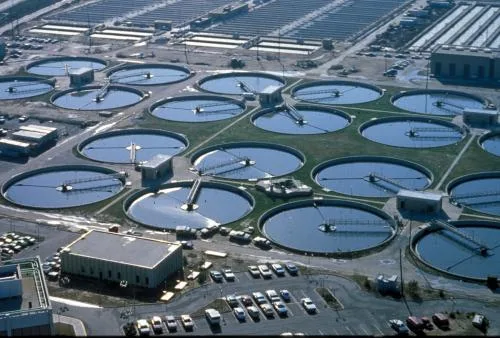Why we care
Manipulating wastewater treatment plant procedures and discharge to enhance carbon removal is practical because of the current readiness of infrastructure to deliver alkalinity to the coastal ocean. Many wastewater facilities already treat wastewater with alkalinity, permits to allow alkalinity discharge already exist, and there are several known technologies that can increase alkalinity in wastewater streams. “This method of carbon removal is attractive because existing wastewater streams provide an opportunity to leverage existing infrastructure and to provide several co-benefits to the facility and the adjacent tidal waters” states Dr. Jeremy Testa of the University of Maryland Center for Environmental Science. Despite the existence of this “shovel-ready” carbon removal technology, there is still much uncertainty. These uncertainties center around costs, the efficacy of the process at a scale that can meaningfully impact coastal waters, and the environmental and biological impacts of various alkalinity-rich materials. “Our research will help quantify the feasibility of this approach” says Testa, and evaluate carbon removal and ocean acidification mitigation via alkalinity enhancement at a wastewater treatment plant in Chesapeake Bay.
What we will do
This project will add alkalinity at a single wastewater treatment plan in the Hampton Roads Sanitation District in Virginia. In the first year, a 1-week test will ensure the safety and rigor of the dosing method. The team will closely monitor and control alkalinity dosing rates within the facility and then concurrently monitor the receiving tidal waters for carbon removal and environmental impacts. During the second year, the researchers will perform a 4-week test. This longer test will help identify other natural factors that modify the potential effect of carbon removal, such as the phase of the tide, the amount of algal growth in the water, and weather. During both tests, the team will monitor oyster growth and other environmental parameters like total suspended solids, nutrient concentrations, metals, and carbon chemistry variables. The results of these two tests will inform an estuary-ocean model to better understand the benefits and impacts of a scaled-up version of these small field tests.
Benefits of our work
This project will evaluate the feasibility, cost, and potential for carbon dioxide removal by alkalinity addition via existing wastewater treatment discharges. It will also provide a well-refined protocol for measuring and monitoring the amount of carbon removed in this context that can be applied to future efforts.
Award amount: $1,864,561
IRA funding? Yes
Funding source(s): NOAA
Project duration: 3 years
Investigators
Jeremy Testa, University of Maryland Center for Environmental Science
Wei-Jun Cai, University of Delaware
Ming Li, University of Maryland Center for Environmental Sciences (UMCES)
Yuanyuan Xu, Planetary Technologies, Inc.
Image: Wastewater treatment plants could be used to enhance alkalinity as a carbon dioxide removal and ocean acidification mitigation approach. Credit: Chesapeake Bay Program



